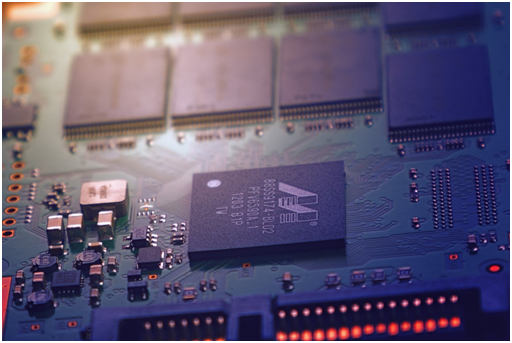- GPS Trackers For Vehicles...
- Cellular Asset Tracking...
- M2M(Machine-to-Machine) G...
- Supply Chain Visibility...
- Fleet Management...
- Narrowband IoT solutions;...
- GPS Fleet Management: Fle...
- GPS Tracking Devices: Why...
- Wireless Temperature Moni...
- Choosing A GPS Vehicle Tr...
- GPS Tracking Device For C...
- Get Smarter Fleet and Str...
- Keep Your Loved Ones in t...
- GPS Tracker OEM/ODM...

PT26 New Magnetic GPS Tracker, Magnetic gps tracking devices With Super Long Standby Time/30 day(Rechargeable) for automobiles

Magnetic GPS tracking for car Built-in 14500mAh Super high-capacity battery, can stand up to three years

3G Tracking Device integrates U-Blox Chip compatible with UMTS/HSPA module for easy 2G to 3G upgrade
Narrowband IoT solutions; How and why NB IoT works
In just 20 years, we have benefitted immensely from the technological advancement achieved via the internet, more so, in the burgeoning field of Internet of Things (IoT). Because of the technology of IoT, almost every device in the world is now connected to the internet. Pundits posit that by the year 2020, the connected devices will amount to 31 billion.
The market has long transitioned from a mere dream to reality and leading IoT companies are investing billions of dollars in research and development. To this end, modern IoT solutions which require Low Power Wide Area (LPWA) has been engendered. The resulting technology is referred to as Narrowband IoT (NB IoT).
What is Narrowband IoT?
Narrowband IoT is a modern wide area network communication technology which enables several IoT devices connect seamlessly. Before now, our use of IoT was restricted to short-distance communication technologies which employed Bluetooth, ZigBee, Wi-Fi, and Z-wave.
If you notice, before narrowband IoT technology matured, the application of Internet of Things was restricted to smart homes, smart energy meters, etc. With NB IoT now, smart parking, wearables, and other industrial solutions are enjoying widespread acceptance.
How Narrowband IoT Works
Low Power Wide Area technology underpins the success of NB IoT. As the name implies, they consume very low power and their coverage spans a wide area. With LPWA, the processing power and memory required is low. The data rate is also reduced, allowing operation in 100kbps range. With narrowband IoT, objects are seamlessly connected, monitored, and controlled over a wide area. Large fleets of gadgets are linked, reaching up to 50,000 per cell.
NB-IoT Engendering a Smart World
Thanks to NB-IoT, our cell phones, television, homes, and even cars are branded as smart devices. However, the technology is been deployed to several other applications. Many industries are benefitting from the big strides in Narrowband IoT and some of them are detailed below.
Smart Cities
Ideally, tracking a city successfully requires a lot of capital. For the technology to be widely accepted, it must show signs of economic feasibility and fortunately, that’s exactly what narrowband IoT offers. The price of NB IoT modems are very competitive, hence, they can be employed on a large scale. Now, environmental conditions can be monitored and predicted more accurately. It is also easier to manage street lighting, parking spaces, etc.
Smart Metering
For smart metering to be actualized, there has to be a reliable and fast network coverage on ground. This is because the meters are often installed in remote areas which are no always accessible. With narrowband IoT, the meters are properly monitored via data transmission. Since the tech allows data to be transmitted regularly over long range, the coverage is significantly better.
Smart Nano Devices
Wearables have had a tremendous impact on the health, technology, and business sector. Advancement has been recorded technologically due to the more sophisticated sensors being used in the devices. Narrowband IoT supports a large number of sensors which have the ability to process data of any kind. The cost is also not significantly higher due to the relatively cheap nature of NB IoT.
Smart Buildings
Our buildings are also enjoying the benefits of Narrowband IoT. Security is ensured using connecting sensors which are directly connected to the monitoring system. This connection is done on LPWA networks, hence is fast, secure, and reliable.
Benefits of Narrowband IoT
Battery Performance
When narrowband IoT solutions are compared to contemporary technology such as LTE and GPRS, the site density and link coverage are seen to be better. NB IoT has a link budget of 164 dB while GPRS and LTE have 144 dB and 142.7 dB respectively. The rate latency and battery life are considerably better in this regard.
Design Flexibility
There is a wide range of data rates supported by narrowband IoT technology. The multiplexing capability is highly remarkable and this makes it easier to alter the signal strength, bandwidth, and efficiency to our advantage. NB IoT devices are capable of transmitting energy without compromising on the performance because they use subcarriers rather than resource blocks. Subcarriers have a bandwidth of 15 kHz, resource block has 180 kHz.
Device Improvement
For devices which are sensor-dependent and are used to detect and measure variables like temperature and humidity, a lower data rate is required. With narrowband IoT, data rates in the range of 100kbps to 200kbps are supported and device optimization is achieved. Also, while NB IoT devices need only one antenna for transmission, LTE requires 2. This ultimately makes the processing easier and less complex.
Power Efficiency
Normally, IoT devices save power when they are not in use. However, the signal processing required during heavy usage makes power consumption high. With narrowband IoT, a less complicated architecture is utilized and this also reduces the power consumption. Besides, NB IoT is critical to the worldwide acceptance of Internet of Things. If we have 30 billion devices connected by 2020, the problem of power consumption will surface sooner or later.
Cost Savings
One reason NB IoT is becoming widely accepted is due to the cost of the modules. The technology is simpler so it uses fewer components. There are also fewer processes involved, reducing the computing time and ultimately giving off a simpler waveform. When you employ Narrowband IoT technology, you are ultimately saving cost.
Reliability
The spectrum on which Narrowband IoT devices operate is licensed and this ensures that the resource is apportioned adequately. Reliability is assured and Quality of Service is guaranteed.
Global Reach
The applications of NB IoT are endless. They are constantly expanding the frontiers of the concept of Internet of Things and they are making global acceptance easier.
Wider Deployment
Narrowband IoT can be deployed to cover wider areas due to the advantage of having lesser bitrate. The link budget, which determines the antenna gain, radio transmitter power level, etc. is also better suited for this purpose. NB IoT is the reason smart technology can be deployed to farther locations successfully.









